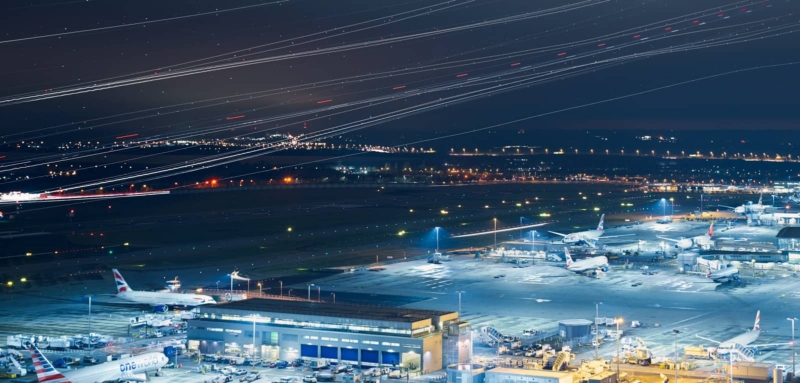At today’s busy airports, every second counts. When punctuality is key and the value of departure slots is counted in millions of pounds, a little delay can add up to a large economic and environmental cost for airport operators, airlines, and passenger inconvenience.
Recently, NATS has been working with European partners including London Heathrow Airport on research that could pave the way for more frequent single-runway departures. This is achieved by evolving the current practice of widely separating two departing aircraft of significantly differing weight and size to protect the follower from the air turbulence created in the wake of the leader.
There has long been a view that smaller aircraft, which generally take off earlier and climb more steeply than heavy aircraft, may not need such large separations as they tend to remain outside the volume of disturbed air.
Building on this principle, our research, which is part of a European SESAR project, focussed on dynamically suspending these wake turbulence separations for smaller aircraft. Our work has established the feasibility of such a concept in principle; in practice this approach could potentially cut separation times in half for some aircraft pairs.

Departing aircraft behave differently according to weight and size
Because aircraft performance varies significantly, even within one aircraft type, predictions of departure trajectories based on historical performance and real-time flight performance are needed. Once a departing leader-follower pair has been identified, automated systems run comparisons to establish whether the predicted take off positions and climb profiles would be sufficiently separated in the prevailing wind conditions. Finally, a dynamic tool notifies the controller of any potential to suspend wake turbulence separation and apply instead spacing procedures that are more typically adopted when wake turbulence is not a concern.
Our work validated this concept through a series of exercises that simulated a dynamic separation display. Our results showed that the opportunistic application of non-wake reduced separation or spacing procedures is acceptable to the controller and that this could lead to a significant increase in departure runway capacity. However, further work is needed to identify what mitigations might be required to account for emergency procedures, for example if the following aircraft suffered an engine failure.

Dynamic separation simulation exercise at Heathrow Airport air traffic control tower
This two-year project has contributed to a re-thinking of how departure separations are applied, moving away from a static use depending on aircraft type or wake category further towards a dynamic use that takes into account the behaviour of individual aircraft. In our future work we will look at developing more sophisticated prediction algorithms and a more realistic human-machine interface.
In a wider context this SESAR Dynamic Pairwise Separation project allows a tantalising glimpse into a world where aircraft performance is woven into the very fabric of today’s air traffic management.
The work described in this article has received funding from the SESAR Joint Undertaking under the European Union’s Horizon 2020 research and innovation programme under grant agreement No 874477. The opinions expressed herein reflect the author’s view only. Under no circumstances shall the SESAR Joint Undertaking be responsible for any use that may be made of the information contained herein.
Comments
Please respect our commenting policy and guidelines when posting on this website.

06.05.2023
14:12
L Storie-Pugh
Most interesting. Thank you for your informative explanation. LSP
17.06.2023
21:32
Lucy Allen
This vision for more and more planes With less rest time between take off is totally ignorant of its negative social impact. the lack of consideration of negative impact on health and noise for stakeholders who are residents living under flight paths is astounding.